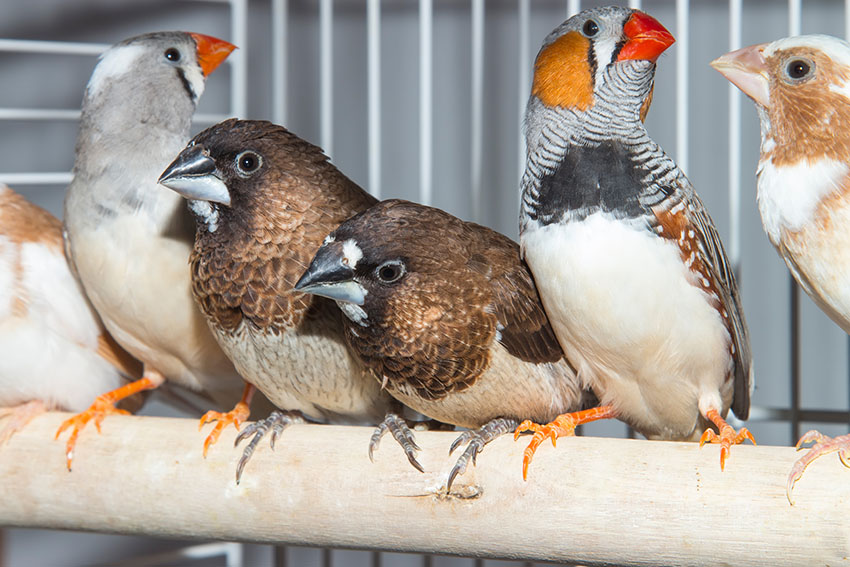Okay, here’s a confession. Most of the birds described in this guide to Canaries and finches are not actually finches, strictly speaking. The majority of small pet birds, including the Zebra finch and Java finch, belong to the Estrildid family, which in biological terms are waxbills, not true finches. In this guide all such birds are grouped together under the unscientific but very handy tag ‘pet finches’.
This makes a big difference in biological terms, but it makes surprisingly little difference in a guide to looking after pet birds. Both branches of the family tree - the true finches and the waxbills - have similar requirements in diet, caging, breeding and general keeping.
Fringillid Finches
The Canary (Serinus canaria) is a member of the Fringillid family of finches, and is a close relative of the Serin (Serinus serinus - sometimes referred to as the European Canary, confusingly). So close, in fact, that interbreeding produces healthy, fertile chicks. It seems likely that a pair of Serin, blown off course a few million years ago, were the avian Adam and Eve to the wild Canary. Serins are very common across much of Europe (but not the UK).

The Canary - a Fringillid finch
The Fringillids are named after that even commoner European bird, the Chaffinch (Fringilla coelebs). The name comes from the Greek phrugilos, meaning sparrow. Other close relatives include the Greenfinch, Goldfinch and Linnet. The family is spread throughout the world, with a notable absence in Australasia.
Estrildid Finches
This is the waxbill family of birds, to which the majority of pet ‘finches’ such as the Zebra finch belong. They are found throughout the tropical regions of Asia and Africa, with a particular abundance in Australasia (filling in all the ecological gaps taken elsewhere by the Fringillid finches mentioned above).

The Zebra Finch - an Estrildid finch
‘Estrildid’ is on odd choice of tag for these birds, derived from the name of a Norse/Germanic goddess called Estrilda, associated with love and the red fire of sunrise. Other versions of the goddess, based on the ‘Estr’ root, include Eastre (i.e. Easter) and Ishtar. The name was applied to this family of birds due to the fiery red beak of the waxbills. Families of birds and other animals are defined by a so-called ‘type species’, and in the case of the Estrildidae the type species was the red-beaked common waxbill (Estrilda astrild)
The similarity between the Fringillid and Estrildid birds most commonly met with in the pet trade is very convenient, as it makes it possible to talk in general of finch diet, behaviour, diseases, etc, without having to have separate guide sections for every aspect of the different birds’ requirements and lifecycle.
Different Types of Pet Finch
There are dozens of different species finch and waxbill species kept as pets around the world. The popularity of certain types varies from country to country, although the Canary and the Zebra finch are usually in the top three whichever corner of the planet you happen to find yourself in.

Zebra and Bengalese Finches
The birds mentioned in the sections that follow are the 15 most popular pet finch species in Great Britain and Europe, but this only scratches the surface. For a more comprehensive checklist of different pet finch species, take a look at Omlet’s Finch Breeds pages.




Comments
There are no comments just yet